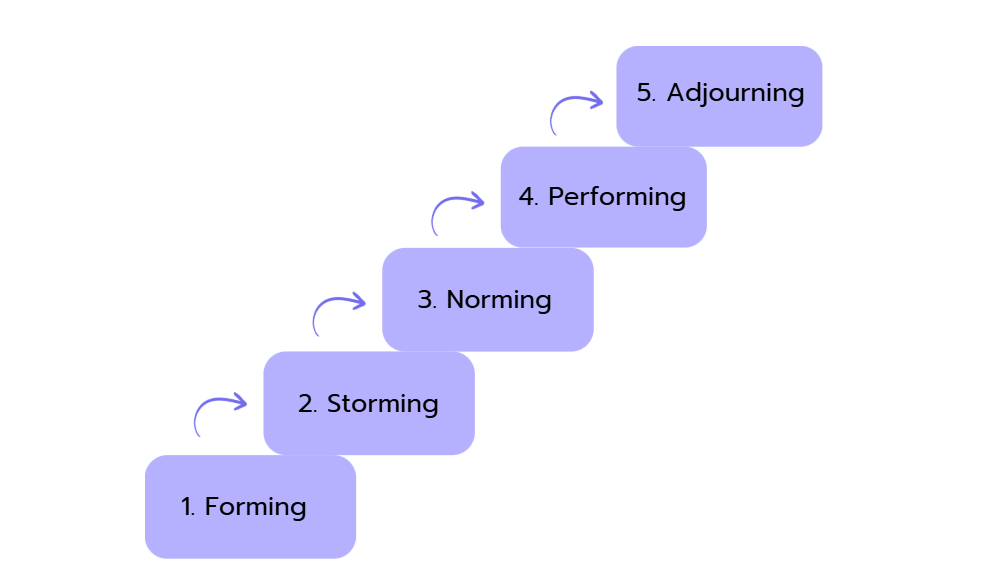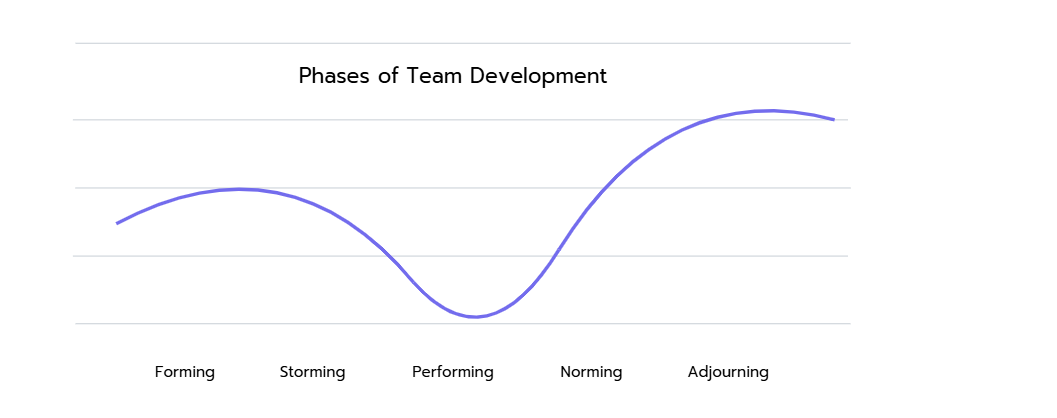At the core of comprehending team dynamics is the ingenious creation of Bruce Tuckman, the Tuckman Model. Bruce Tuckman, an eminent psychologist and researcher, introduced this model in 1965, and it has since been a fundamental framework for understanding team behavior and guiding team development.
Tuckman, with his deep-rooted interest in group dynamics, recognized the evolution teams go through in their journey towards high performance. His model offered a lucid, linear path for this evolution, making it easily understandable and implementable in varied team environments.
His ground-breaking work has led to profound shifts in how organizations manage their teams, promoting a more empathetic and result-oriented approach. Tuckman's model stands out as an insightful roadmap that helps navigate the complex maze of team development, and its utility spans multiple disciplines and industries.
In a consultancy environment, the model is especially relevant due to the constant team reshuffling and the high value placed on effective teamwork. With consultants often stepping into pre-established teams, understanding the team's current developmental stage - whether it's forming, storming, norming, performing, or adjourning—is invaluable.
By using Tuckman's model as a reference, consultants can quickly assess team dynamics, identify issues, and devise strategies to move the team towards the next stage. In essence, Tuckman's model provides a clear framework that can be used to maximize team effectiveness, making it a critical tool in the consultant's toolkit.
Tuckman's five Stages of Group Development
Tuckman's model outlines five fundamental stages of group development, namely: forming, storming, norming, performing, and adjourning. Each stage has its own unique characteristics, contributing towards the overall progress of the team.

1. Forming: Laying the Groundwork for Team Development
The forming stage marks the beginning of a team's journey, where individuals with diverse skills come together around a common goal. At this point, team members are polite and professional, focusing on understanding their roles, the project, and each other. Collaboration is minimal, as individuals prioritize getting familiar with their responsibilities and the team dynamic.
Rather than a lack of synergy, this phase is crucial for laying the foundation of team norms, structures, and communication. Leaders play a key role in setting expectations and fostering an open environment. Though not highly collaborative yet, the forming stage sets the groundwork for the team’s future development.
2. Storming: Navigating the Turbulent Waters Towards Team Cohesion
As the team moves past initial introductions, they enter the storming phase – a period of friction and disagreements as different working styles and opinions emerge. The honeymoon phase fades, and team members begin asserting themselves, sometimes leading to conflict.
This stage revolves around negotiating roles, decision-making processes, and team norms. While it may feel disruptive, it is a crucial step toward cohesion. Open dialogue and conflict resolution become essential, helping the team embrace diverse perspectives and grow stronger.
Leaders play a key role in guiding the team through this phase, fostering mutual respect and reinforcing shared goals. Though challenging, the storming stage is a necessary step in shaping a resilient, high-performing team.
3. Norming: Setting the Stage for Collaborative Success
The norming stage marks a turning point in the team’s development, as initial conflicts settle and members shift from individual agendas to a collective focus. Differences that once caused friction now become strengths, fostering better communication and collaboration.
During this phase, the team establishes clear norms, roles, and expectations, creating a shared understanding of how they work together. Leaders play a crucial role in reinforcing open communication, ensuring every voice is heard, and aligning individual efforts with team goals.
While disagreements may still arise, they are now handled with greater respect and structure. The norming stage serves as a foundation for high performance, preparing the team for the next phase, where their true potential comes to life.
4. Performing: The Symphony of Peak Productivity
The performing stage is where a team reaches peak efficiency and synergy, having successfully navigated the challenges of forming, storming, and norming. Like a well-tuned orchestra, team members work seamlessly, understanding their roles and responsibilities while trusting and respecting one another.
Collaboration is at its highest, with individuals aligned toward shared goals, handling challenges constructively, and taking initiative. Leadership becomes more decentralized, as the team is empowered and self-sufficient.
This stage exemplifies the power of effective team development, where collective efforts yield results far greater than individual contributions. However, sustaining high performance requires ongoing communication and proactive teamwork to maintain momentum and efficiency.

5. Adjourning: An Opportunity for Reinvention
The adjourning stage marks the conclusion of a team’s journey, as members part ways after achieving their goals. This phase brings a mix of emotions – pride in accomplishments, but also sadness at saying goodbye to teammates who have shared challenges and successes.
Beyond closure, adjourning is a time for reflection, celebration, and learning. It highlights the value of trust, shared understanding, and interpersonal relationships, which often prove more crucial to success than technical skills alone.
This stage also challenges the traditional approach of forming teams around hard skills alone. Instead, it suggests a shift toward maintaining high-performing teams and assigning projects to them, preserving the synergy they’ve built. Ultimately, adjourning is not just an end but a stepping stone toward stronger, more resilient teams in the future.
Enhancing Consulting Practices with the Tuckman Model
When consultants enter existing teams, the Tuckman Model provides a reliable roadmap to understanding the team's dynamics and stages of development. This practical tool helps in pinpointing exactly where a team stands in their journey, be it forming, storming, norming, performing, or adjourning.
The Tuckman model's structure allows consultants to adopt a tailored approach to their interactions with team members and leadership. By understanding the stage of the team's development, a consultant can offer insights and strategies that resonate with the team's current situation and pave the way for growth.
For instance, if a team is in the storming phase, a consultant can provide conflict resolution strategies and encourage open communication, thereby facilitating the transition towards norming. Conversely, if a team is in the performing stage, the consultant can focus more on maintaining high performance and preparing the team for the inevitable adjourning phase.
One of the most valuable assets in consulting is communication, and the shared terminology provided by the Tuckman model enhances this asset considerably. This common language allows for clear, concise conversations about the team's development, fostering understanding and cooperation between the consultant and the team.
Moreover, the model's emphasis on a systematic approach aligns perfectly with the world of consulting. It advocates for a progressive and strategic method for team development, something that consulting professionals can incorporate into their work ethic. It also sets the expectations right – making it clear that high performance is not an overnight achievement, but the result of a gradual, step-by-step process.
Lastly, the Tuckman model encourages an environment of continuous learning and high performance. It underlines the fact that the journey doesn't end at performing - adjourning is a part of the process, and it should be handled with care. This understanding is vital for consultants, who can prepare the team for this eventuality and plan strategies for maintaining team morale and productivity. The Tuckman model's universality and systematic approach make it a potent tool in a consultant's arsenal, enabling them to foster a culture of high performance and continuous learning within teams. Therefore, it truly proves to be an invaluable companion in the exciting journey of consulting.

